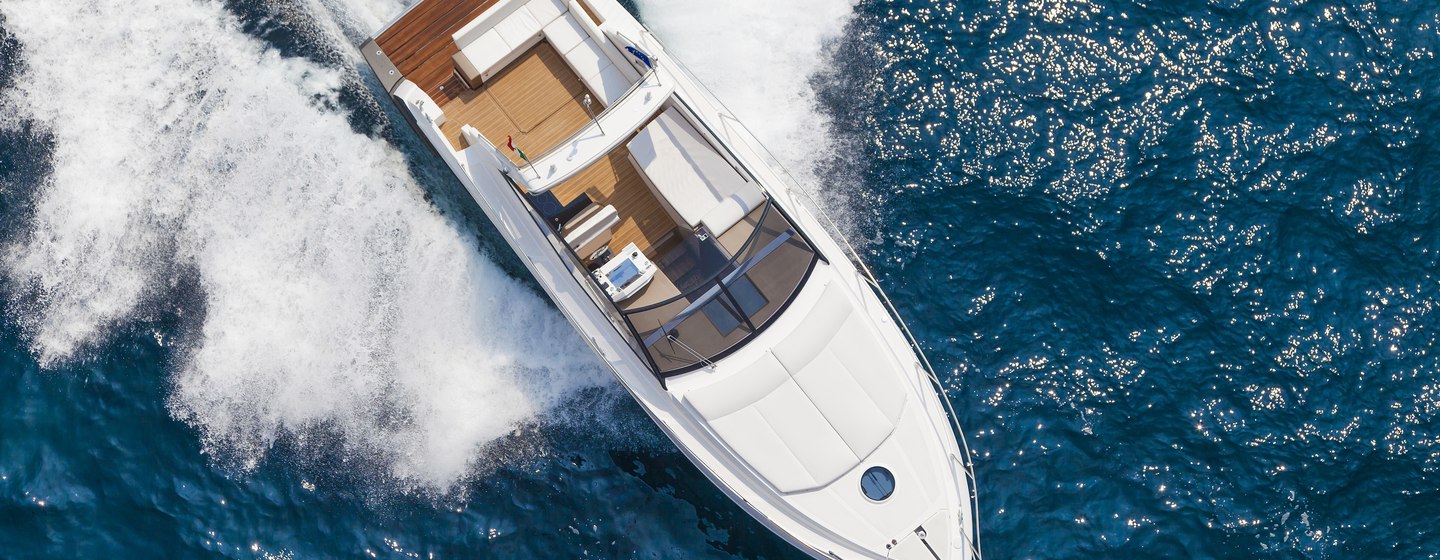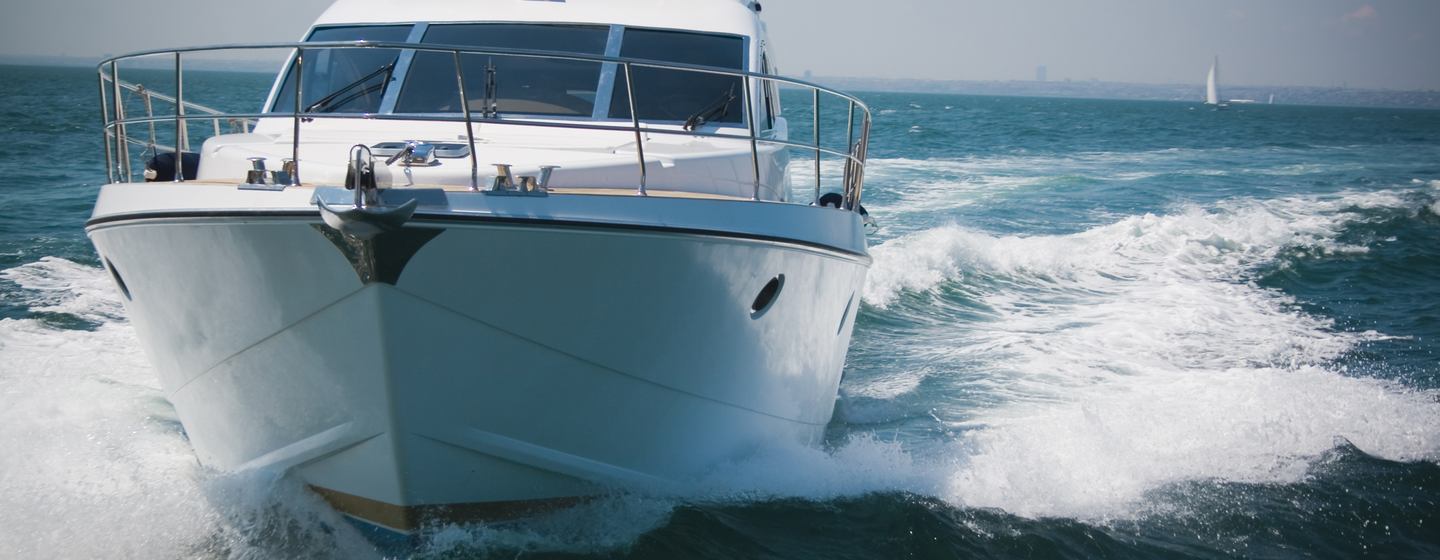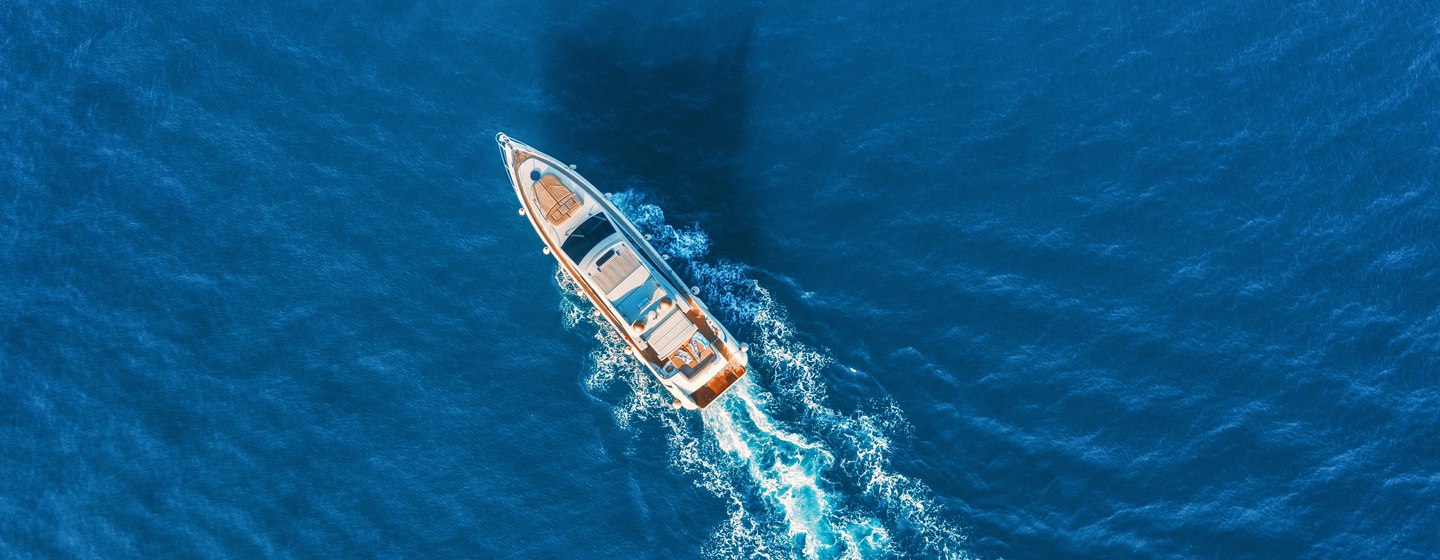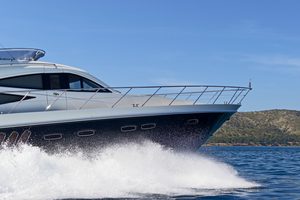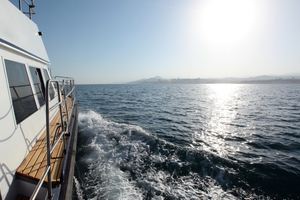Mastering the art of trimming your yacht for optimal efficiency and comfort involves a blend of trial and error coupled with a solid understanding of the intricacies of yacht performance. It's an interplay of technique and precision with a little patience, all aimed at achieving greater speed, fuel efficiency, and a smoother ride. The skill of trim is the key to unlocking the full potential of open water cruising.
Yacht Handling in Open Water
Handling a yacht in open water is often the very reason you acquired one in the first place. There's an undeniable thrill in being out on the water on a beautiful day, with nothing but the horizon ahead and your favorite people by your side.
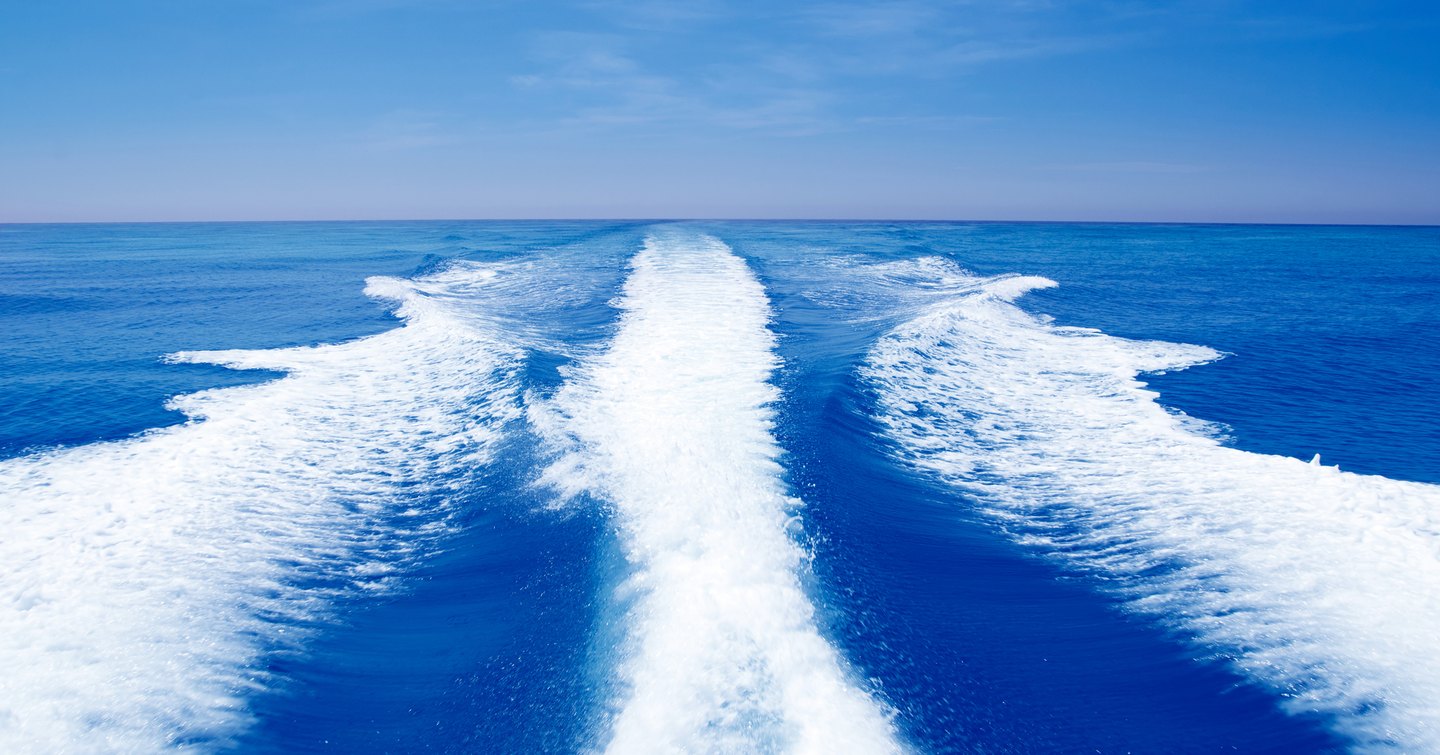
As the captain of your own yacht, you bear the responsibility of being in charge at all times. This includes moderating your wine consumption during a picnic lunch on anchor, or declining the offer of a “cold one” at the helm station.
With this sense of responsibility understood, it's time to put your yacht through its paces. Let's explore handling tips for various scenarios, enhancing your enjoyment, ensuring safe cruising, and maximising the exhilaration of yacht ownership.
Fast Cruising
When running at fast cruising speeds or above, the impact on the hull can be great and the ride quality harsh. To improve the ride quality and overall performance of your yacht, follow a few basic rules and enjoy the ride a whole lot more.
For the purposes of general advice, this section will focus on moderate sea states. Running fast in rough or severe sea stares is both highly specialist and, for the most part, ill-advised.

In moderate conditions, running at 25 knots in calm water is quite different from running at the same speed with a 1m swell or chop. So be aware of the onboard environment and how much punishment your yacht and crew are taking.
It is worth remembering that rougher seas also have a big effect on fuel consumption, the engines having to work harder to push through the water and maintain a speed.
Vessel Trim
Trim
Trim refers to the adjustment of the boat's balance in the water. It involves optimizing the distribution of weight and buoyancy to ensure the vessel moves smoothly and efficiently. Proper trim helps maintain the yacht's stability and performance, minimizing drag and resistance, and contributing to a comfortable and safe ride for those on board.
Adjusting the trim is essential for achieving the desired handling characteristics and ensuring an optimal cruising experience, especially during varying sea conditions and speeds.
Lateral Trim
Lateral trim refers to the side-to-side balance of a vessel in the water. It involves adjusting the weight distribution across the width of the boat to ensure that it remains level and stable from port to starboard. Employ the use of trim tabs to fine-tune the lateral trim, enabling you to adjust the angle of the tabs to counteract any imbalance and achieve optimal lateral stability.
Motor yachts, particularly taller designs with a higher center of gravity, are susceptible to the effects of wind and the overall motion of the sea. When running at speed, taller yachts tend to lean slightly into the wind, a modification easily and instinctively rectified using the trim tabs.
Ride Angle
The ride angle refers to the inclination or pitch of a vessel relative to the water's surface. It represents the angle at which the boat's hull interacts with the water, particularly when in motion.
As your speed increases the ride angle will change. A planing hull will ride bow up as it moves onto the plane and then level out as speed increases.
This level ride angle can be assisted by using trib tabs to push the stern up and further level the ride.
On sterndrive craft the legs can be hydraulically trimmed out, pushing the hull up and out of the water, reducing the planing area and so the drag or the ‘wetted area’, improving on performance and efficiency.
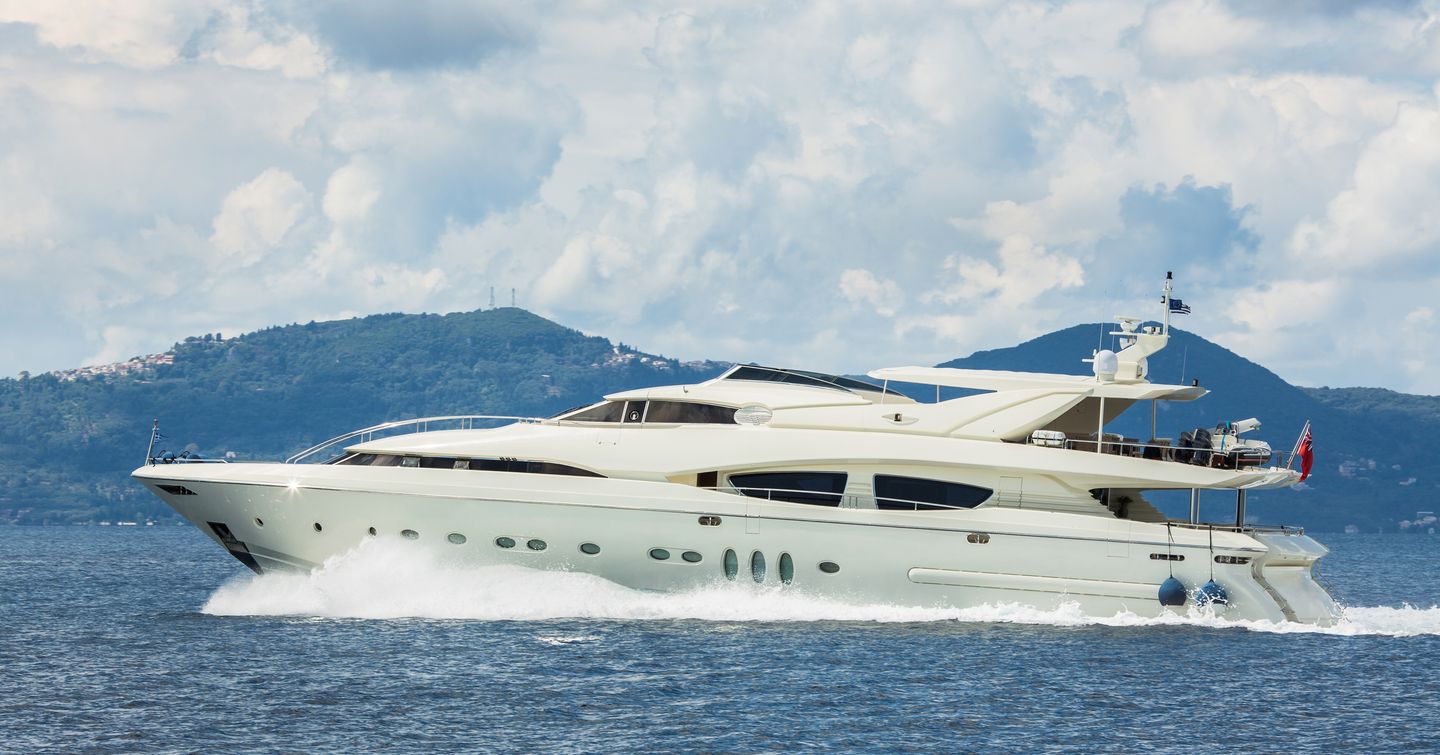
Trim Tab Control
Trim tab control refers to the mechanism used to adjust the position of trim tabs on a boat or yacht.
Trim tabs are small, adjustable surfaces attached to the trailing edge of a boat's hull. If it's a manual system, the tabs are controlled remotely from the helm or control station, allowing the operator to modify the angle of the tabs in response to changing sea conditions, weight distribution, or desired handling characteristics.
By manipulating the trim tab control, the operator can fine-tune the boat's trim, lateral balance, and overall performance, ensuring a smoother and more stable ride.
Certain trim tab controls may display indicators for bow up or down, where bow up denotes the tabs in their default, unengaged position, and bow down signifies the tabs pushing down, lifting the stern, and causing the bow to dip.
Irrespective of the markings on the tab controls, the principle remains consistent. To achieve lateral balance, you add some tab (bow down) to the side of the yacht that is lower, causing the hull to rise slightly.
Sterndrive Leg Trim Control
The sterndrive or outdrive legs can be adjusted in or out using hydraulic rams, directly impacting the yacht's ride angle. When trimmed out at speed, the yacht's hull is raised and lifted out of the water, effectively reducing drag.
Conversely, keeping the leg trimmed in ensures that the hull remains firmly planted in the water, maintaining stability and control.

Moving to Planing Speeds
- Trim Tabs:
The trim tabs are gradually adjusted to achieve an optimal balance, helping the vessel to plane smoothly by reducing the resistance against the water.
- Sterndrive Trim:
Utilizing the sterndrive trim to gradually raise the bow, allows the yacht to plane efficiently while minimizing resistance and drag.
- Lateral Balance:
To ensure stability and control as the boat accelerates, maintaining a balanced lateral trim prevents excessive tilting.
By applying these techniques, you can effectively optimize the trim to facilitate the transition to planing speeds.
Sterndrive ‘porpoising’
Avoid over-trimming the legs of a sterndrive yacht when operating at high speeds, as it can lead to decreased performance and a less stable helm.
Over-trimming is often indicated by a subtle bouncing or 'porpoising' effect during the ride. If this occurs, simply trim in slightly to stabilize the ride.

Automatic Trim Technology
Automatic trim tabs were a revolutionary advancement in marine technology, and have transformed the way modern yachts and boats navigate the open waters. Integrating cutting-edge sensor systems and sophisticated hydraulic controls, these intelligent tabs continuously monitor the vessel's pitch and roll, dynamically adjusting to the changing sea conditions in real-time.
By automatically fine-tuning the trim of the boat, these tabs enhance overall performance, mitigating the effects of rough seas and providing a more comfortable experience for passengers.
Beyond their capacity to maintain stability, automatic trim tabs significantly contribute to the reduction of fuel consumption and carbon emissions. By constantly optimizing the yacht's position in the water, they minimize drag and resistance, thereby maximizing speed and improving fuel economy.
Wind and Waves
Wind and Wave Direction
When running into the wind, the hull encounters the steeper face of the wave, resulting in a rougher ride. On the contrary, running with or before the wind offers a smoother experience, with the hull gliding along the longer, sloped back of a wave. In both cases, optimal trim adjustments can significantly enhance the performance and comfort of the yacht.
Running Into The Wind
When navigating into the wind, the trim should be adjusted to lower the bow, enabling the sharper forward sections to cut through the chop, instead of the flatter mid-section. This can be accomplished by positioning the trim tabs in the bow-down position or by trimming in the sterndrive legs.
Running Before The Wind
While cruising with the wind, you'll enjoy a smoother ride as the hull glides over the softer wave sections. If the wave heights increase, the ride quality can be maintained by keeping the bow up and out of the wave troughs. The trim tabs should be in the full bow-up position and the sterndrive legs should be trimmed out, pushing the bow up and out.
Running Across The Waves
If facing a rough ride due to wind, consider adjusting your course to run across the waves at an angle. While this might lengthen the overall passage time, it can offer a more favorable ride experience, particularly for shorter trips. Make regular course adjustments as you gradually steer toward your intended destination.
Consider a change of destination should the conditions not improve, carefully weighing the extended passage duration against the factors of convenience and comfort.
Slow Speed Cruising
In contrast to fast cruising, slow speeds demand less effort from the helm. However, employing a few techniques can ensure that each passage remains an enjoyable and smooth experience.
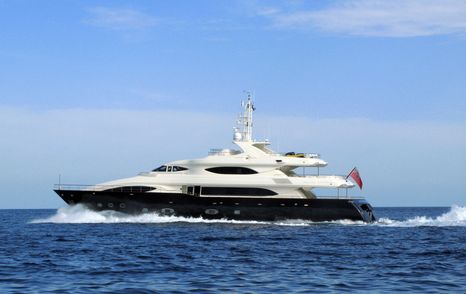
Keeping On Course
When cruising at lower speeds for an extended duration, factors such as wind and tide can potentially push you off course. Employing a chartplotter ensures you remain on the intended course, while navigation from a paper chart involves using a calculation known as 'course made good'.
Cross Track Error (XTE) is a navigational term that refers to the distance between the intended course line and the vessel's actual track. It measures how far the vessel has deviated from the planned course and helps the navigator or autopilot system in making necessary adjustments to correct the course and steer the vessel back to the intended route.
For shorter coastal or port-to-port passages within sight of land, a helpful tip is to take note of a prominent landmark and maintain its position within your desired line of sight.
Cruising Sweet-Spots
Each yacht, regardless of its performance or design, has specific cruising speeds that seem to fit just right. These ideal speeds may not necessarily align with manufacturer claims. Instead, they're the speeds that feel most optimal in a given sea condition or when a particular mood strikes.

For instance, your yacht might be capable of hitting 30 knots, with a fast cruising speed of 26 knots and an economical cruising rate of 21 knots. Yet, you may discover that the yacht glides seamlessly at 24 knots in favorable seas, offering a more balanced experience than at 26 knots, or cruises comfortably at 17 knots for a relaxed and efficient ride.
Likewise, a full displacement yacht may have a hull speed of 9 knots but exude a more refined, quiet, and composed demeanor at 7 knots.
These subtle nuances contribute to the special bond between the skipper and the yacht.
